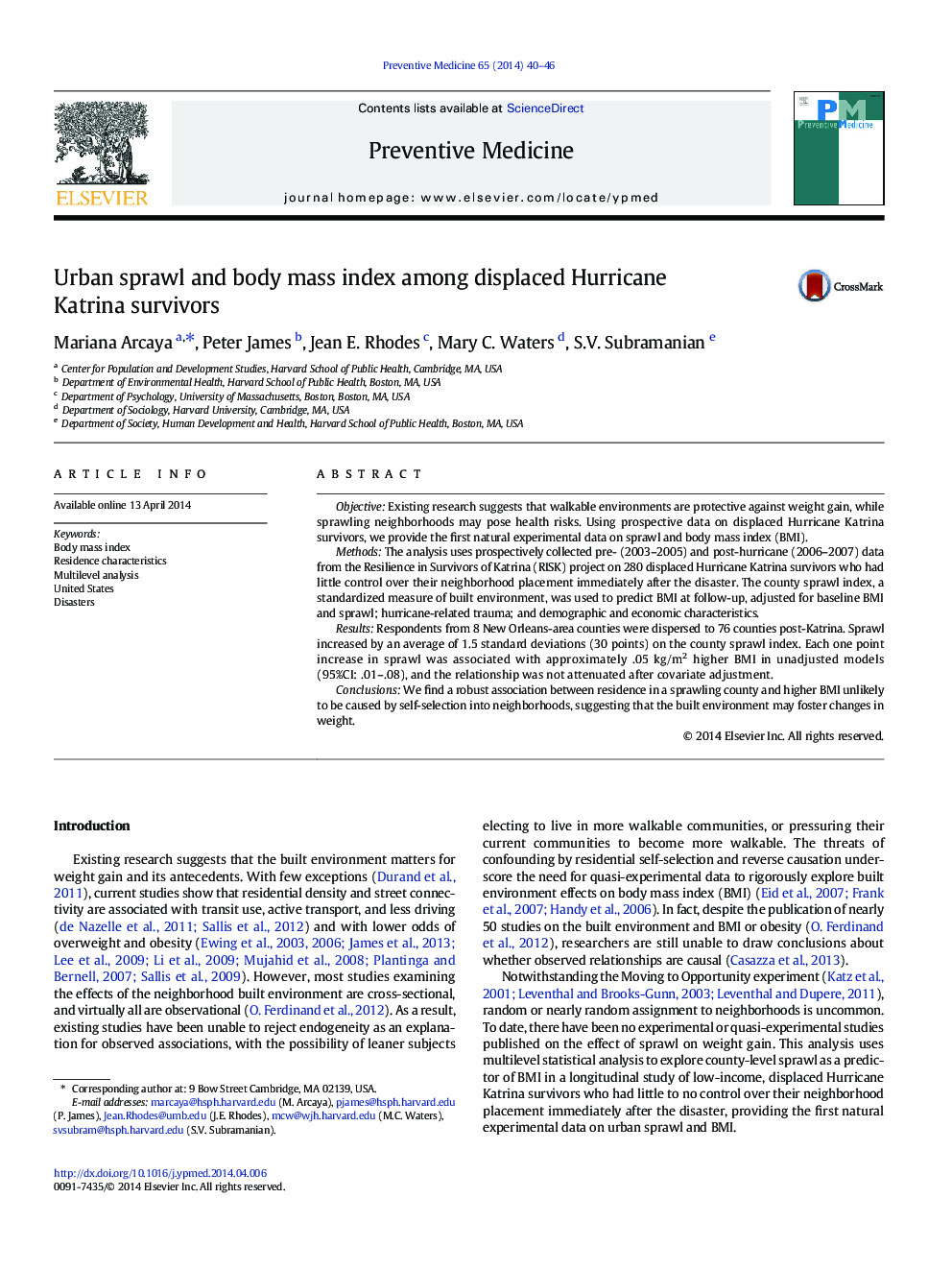| Article ID | Journal | Published Year | Pages | File Type |
|---|---|---|---|---|
| 3100500 | Preventive Medicine | 2014 | 7 Pages |
•We investigate the effect of sprawl on body mass index among a displaced population.•Relocation to more sprawling areas was associated with weight gain.•Results did not appear to be driven by self-selection into neighborhoods.
ObjectiveExisting research suggests that walkable environments are protective against weight gain, while sprawling neighborhoods may pose health risks. Using prospective data on displaced Hurricane Katrina survivors, we provide the first natural experimental data on sprawl and body mass index (BMI).MethodsThe analysis uses prospectively collected pre- (2003–2005) and post-hurricane (2006–2007) data from the Resilience in Survivors of Katrina (RISK) project on 280 displaced Hurricane Katrina survivors who had little control over their neighborhood placement immediately after the disaster. The county sprawl index, a standardized measure of built environment, was used to predict BMI at follow-up, adjusted for baseline BMI and sprawl; hurricane-related trauma; and demographic and economic characteristics.ResultsRespondents from 8 New Orleans-area counties were dispersed to 76 counties post-Katrina. Sprawl increased by an average of 1.5 standard deviations (30 points) on the county sprawl index. Each one point increase in sprawl was associated with approximately .05 kg/m2 higher BMI in unadjusted models (95%CI: .01–.08), and the relationship was not attenuated after covariate adjustment.ConclusionsWe find a robust association between residence in a sprawling county and higher BMI unlikely to be caused by self-selection into neighborhoods, suggesting that the built environment may foster changes in weight.
